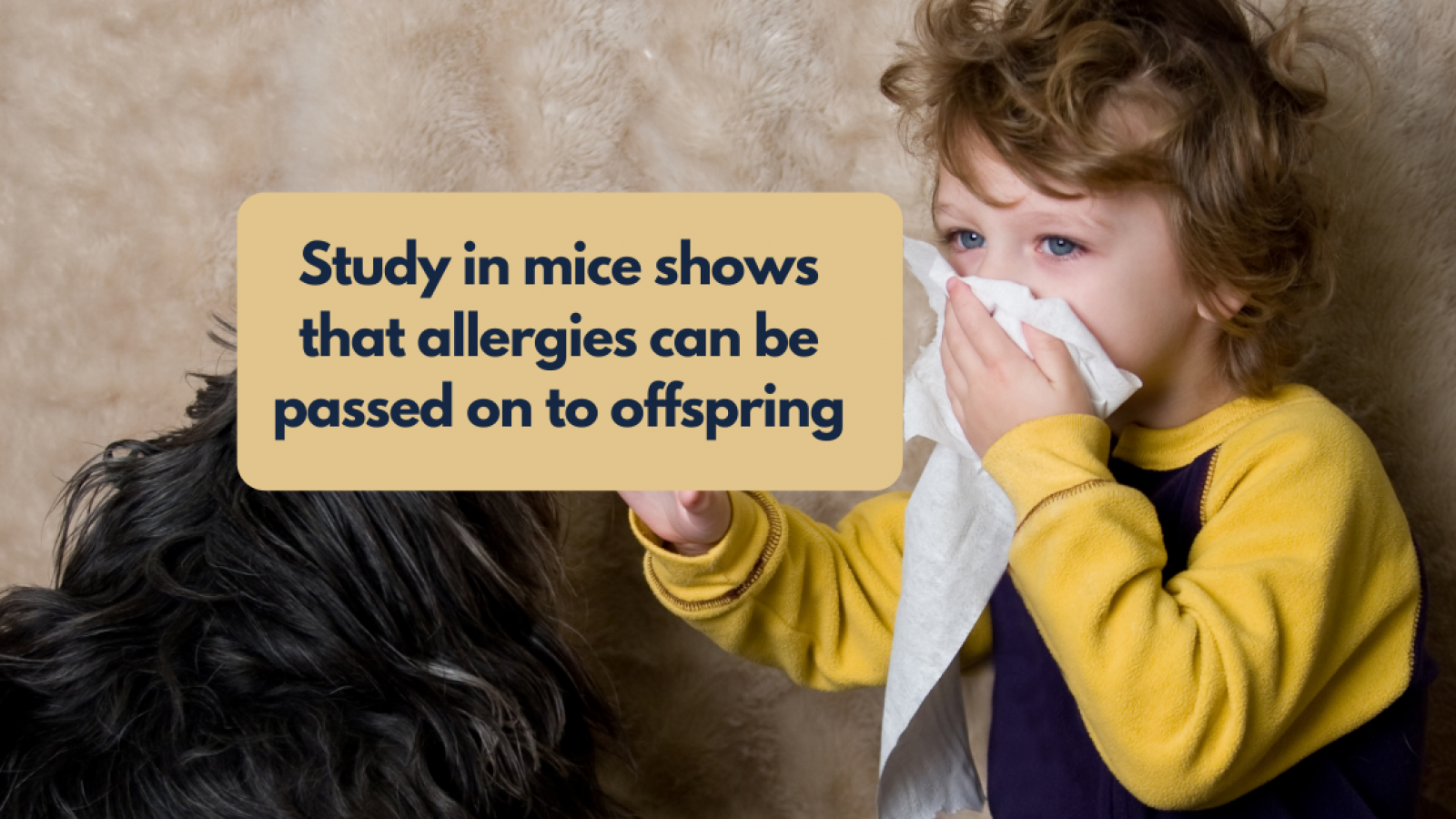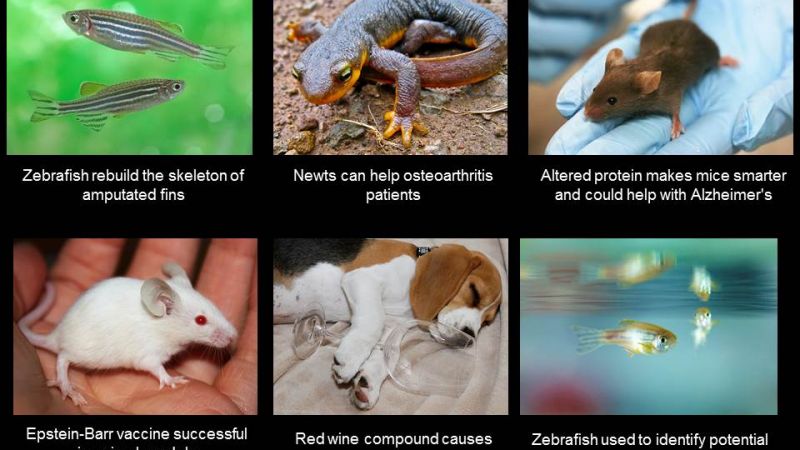Allergies are the most common chronic disease in Europe. More that 150 million Europeans struggle with allergic conditions. The numbers are increasing and it is predicted that by 2025 fully half of the EU population will be affected.
A study in mice shows mothers can pass down allergies to their offspring.
The UK has some of the highest prevalence rates of allergic conditions in the world, with more than 1 in 4 people affected by one or more allergic disorder. Children are particularly vulnerable. The percentage of children diagnosed with allergic rhinitis and eczema have both trebled over the last 30 years and it is predicted to further increase in the years to come.
Yet, there is no cure for allergies, and patients usually have to make do with treatments or preventive measures. To improve this situation we need to improve our understanding of how the immune system comes to over-react so strongly to foreign substances. One avenue of research is into inherited forms of allergic reactions.
“Allergies can begin very early in life," said Associate Professor Ashley St. John, an immunologist at Duke-NUS in Singapore. "And it happens that infants experience allergic responses closely linked with their mother's allergic response in ways that cannot only be explained by genetics.”
Passing on diseases and health conditions from mother to foetus is not unheard of. However, the transmission of allergies is a rather unexplored area. To understand the mechanisms at play, researchers from the Agency for Science, Technology and Research (A*STAR), KK Women's and Children's Hospital (KKH) and Duke-NUS Medical School in Singapore exposed mice to ragweed pollen, a common allergen, prior to pregnancy.
The mice that developed a sensitivity to the pollen gave birth to offspring that also showed an allergic reaction to ragweed. The reaction was specific, the offspring didn’t react to dust mites, or any other common allergen. However, the transfer of sensitivity appeared to fade with time and the new-born mice had lesser allergic reactions after six weeks.
Further imaging and cellular tests showed that the key specific antibody responsible for triggering allergic reactions was immunoglobulin E (IgE). This could cross the placenta and enter the foetus. Once inside the foetus, the IgE binds to foetal mast cells, a type of immune cell, triggering them to releases chemicals that cause allergic reactions to an allergen. This reaction could be anything from runny noses to asthma.
The new-born mice were developing allergic reactions to the same type of allergen as their mothers, but on a single exposure, unlike adult mice, which required two exposures.
"Antibodies have a half-life, which means that the antibodies that transfer from the mother to the foetus will slowly break down over time. Therefore, they only confer allergic responses for a period of time and then slowly decline in concentration and influence. We don't yet know if they promote the offspring to develop its own allergies to those allergens and this is something we will be studying in the future," Ashley St. John tells SciDev.Net.
This study further showed that the IgE transfer across the placenta required the help of another protein, FcRN, expressed at the interface between the mother and developing foetus. The molecule binds specifically to antibodies and acts as a shuttle, carrying them across this placental barrier that usually does not allow the passage of antibodies. Mice with FcRN knocked out lacked maternal IgE attached to their mast cells, and did not develop allergies after birth.
Dr Florent Ginhoux, Senior Principal Investigator at A*STAR's Singapore Immunology Network said, " We discovered that foetal mast cells phenotypically mature through the course of pregnancy, and can be sensitised by maternal IgE that cross the placental barrier."
Studies also showed that human maternal IgE can bind to human foetal mast cells, indicating they might cross the placenta in humans in a similar way.
"Our research has really exciting findings that may explain the high incidence of early onset atopic dermatitis (eczema) in children of mothers with clinically proven eczema, which parallel findings in our local birth cohort findings," said Professor Jerry Chan at KKH.
"From a clinical point of view, developing a further understanding in placental transfer of IgE, and the mechanism of foetal mast cell activation would be key to developing strategies to reduce the chance of eczema or other allergies from being transferred from mother to baby."
As the numbers of children with allergies are rising like never before, the findings potentially open new strategies to prevent allergies being passed from mother to child and minimise the occurrence of neonatal occurrences.
"We could identify highly allergic mothers and try to reduce their IgE levels during pregnancy by removing them from blood circulation," Ginhoux tells SciDev.Net.
Last edited: 3 March 2022 11:24




